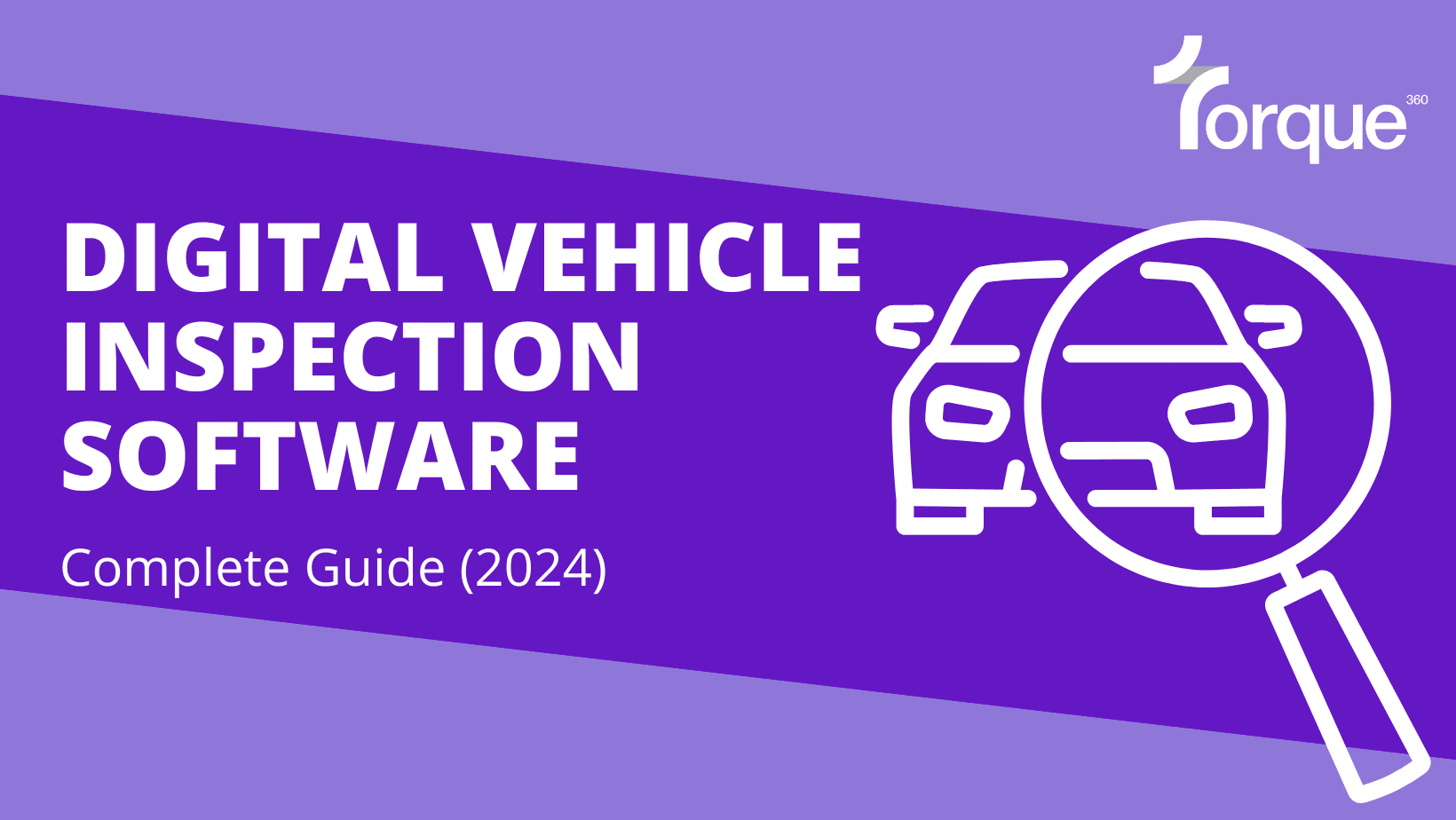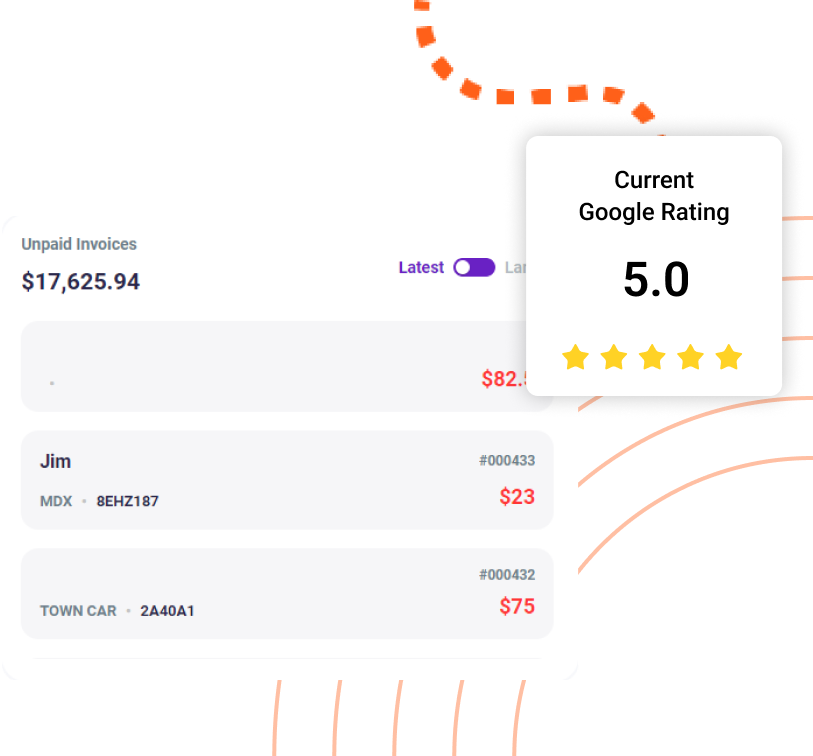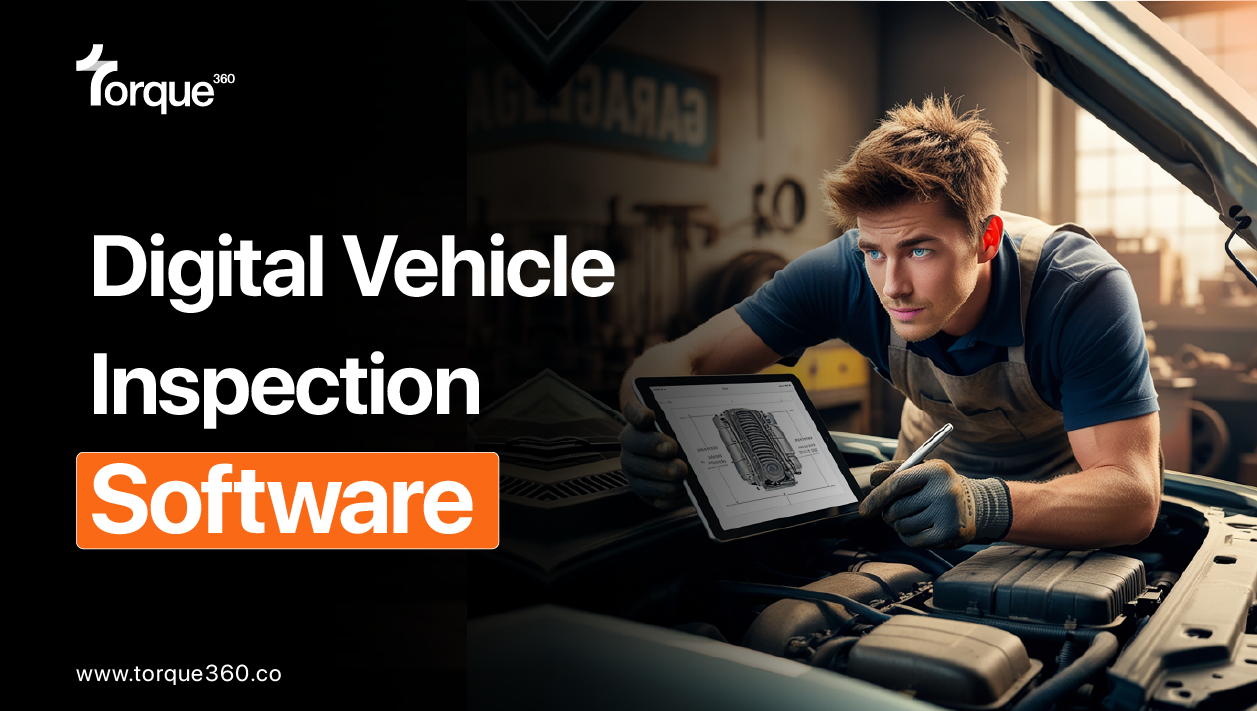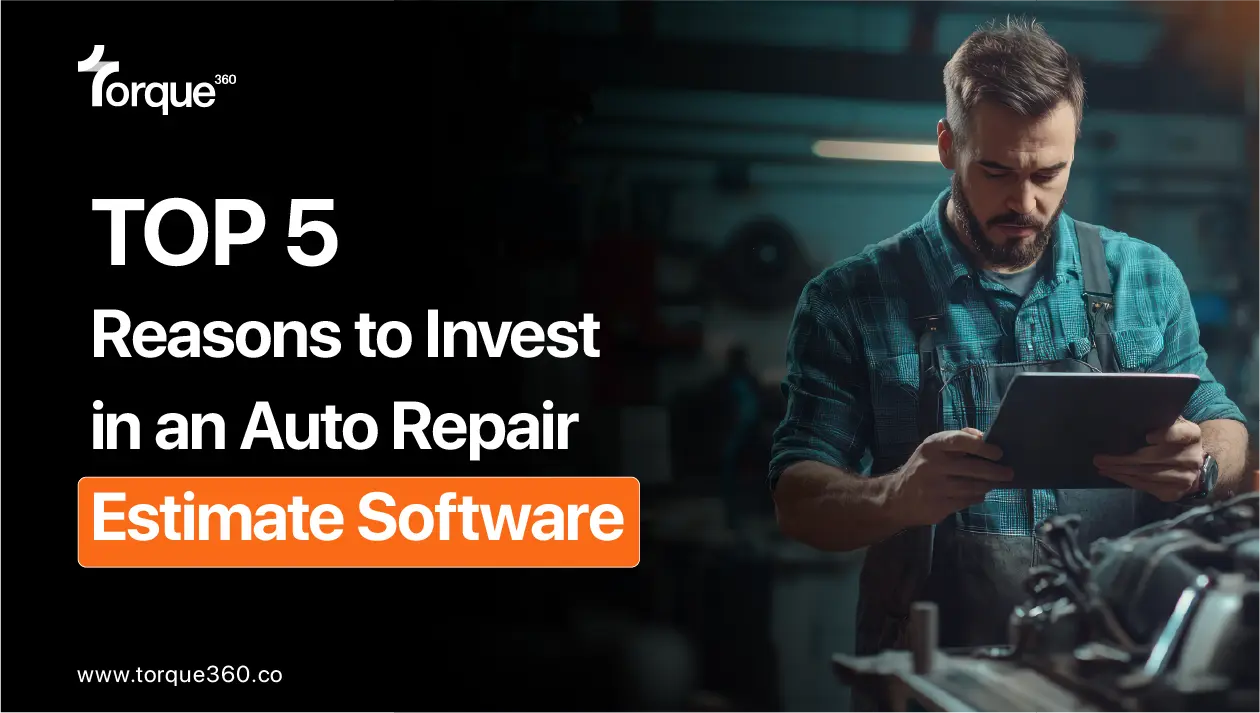Ever wondered if your repair shop is still stuck in the past with handwritten vehicle check-ins?
Well, you’re not alone – turns out, that about 25% of shops are still scribbling away.
But guess what? Big changes are on the horizon!
As more people embrace shared mobility solutions, the demand for efficient, reliable, and technologically advanced vehicle inspection processes is growing. DVI is a super easy way to ditch the pen-and-paper routine.
In this guide, we will explain all you need to know about Digital Vehicle Inspection Software.
Let’s explore!
Chapter 1: Understanding Digital Vehicle Inspections
A. What Are Digital Vehicle Inspections?
A Digital Vehicle Inspection (DVI) is a high-tech way of checking cars, using digital tools instead of paper. It shows pictures and videos to explain what’s going on. This makes it easier to understand and communicate in the car industry.
In the automotive industry, the term “Digital Vehicle Inspection” or “DVI” is increasingly common. Implementing DVI means transitioning from paper-based inspections to a digital format, eliminating the need for paper, pens, and clipboards. Digital vehicle inspection software facilitates checklist management, comments, estimates, and the easy sharing of comprehensive reports with customers via text or email.
The complete Digital Vehicle Inspections (DVI) Solution is expected to experience a growth rate, reaching USD 2524.7 million by 2029, showcasing a Compound Annual Growth Rate (CAGR) of 13.5% from 2023 to 2029.
Benefits of Implementing DVI in Auto Maintenance
Following are the benefits of using DVIs:
- Efficiency Boost: Streamlining the auto maintenance process, saving time for both technicians and customers.
- Enhanced Accuracy: Providing a more precise assessment of vehicle conditions through visual evidence, reducing errors.
- Improved Customer Understanding: Visual documentation helps customers better comprehend recommended repairs and maintenance.
- Cost Savings: Identifying issues early on prevents potential costly repairs, saving money for vehicle owners.
- Remote Decision-Making: Allowing customers to review and approve recommended work remotely, increasing convenience.
- Streamlined Communication: Facilitating effective communication between technicians and customers, leading to smoother transactions.
- Paperless Operations: Reducing reliance on paper documentation, contributing to a more environmentally friendly approach.
- Increased Customer Trust: Transparent communication and visual evidence build trust between auto service providers and customers.
- Data Accessibility: Storing inspection data digitally for easy retrieval, analysis, and future reference.
- Adaptability: Adapting to modern technology trends, aligning with the digital transformation of the automotive industry.
Chapter 2: Key Components of DVIs
Digital Vehicle Inspections Software (DVIs) incorporate several key components to enhance the overall efficiency and effectiveness of auto maintenance processes:
Barcode Scanning for Appointment Information:
Functionality: Service advisors can scan the barcode of a vehicle upon arrival, instantly retrieving pending appointment details.
Benefits: Streamlines the check-in process, providing service advisors with immediate access to relevant information, allowing for better preparation and communication.
Video and Picture Evidence:
Functionality: Enables the capture and inclusion of video and picture evidence of the repair or maintenance needs.
Benefits: Enhances transparency by providing visual documentation, allowing customers to see the actual condition of their vehicle. This visual evidence aids in building trust and facilitating informed decision-making.
Automatic Updates and Information Sharing:
Functionality: Allows for automatic updates on the repair progress and facilitates the sharing of information among technicians.
Benefits: Promotes collaboration and real-time communication among team members. Technicians can stay informed about ongoing repairs, reducing the likelihood of miscommunication or delays.
Up-to-Date Progress Reports:
Functionality: Generates up-to-date progress reports that change the conventional approach by incorporating pictures.
Benefits: Transforms the way reports are presented by adding a visual dimension. This not only provides a more comprehensive understanding of the repair status but also serves as a valuable reference for both technicians and customers.
Chapter 3: Implementation Strategies
Best Practices for Implementing Digital Vehicle Inspection Software
- Thorough Training: Provide comprehensive training for technicians and service advisors on DVI tools.
- Customer Education: Educate customers on the benefits of DVIs and real-time updates.
- Standardized Protocols: Establish standardized inspection protocols for consistency.
- User-Friendly Software: Choose easy-to-use digital vehicle inspection software to enhance adoption rates.
- Integration with Systems: Ensure seamless integration with existing auto repair systems.
- Regular Software Updates: Stay current with regular software updates for security and features.
- Clear Communication: Establish clear communication channels for efficient information exchange.
- Feedback Mechanism: Implement a feedback mechanism for continuous improvement.
Overcoming Challenges in Transitioning to Digital Inspections
Transitioning from traditional to digital inspections in the automotive industry can present challenges. Here are effective strategies for overcoming these hurdles:
Technician Resistance:
Challenge: Resistance from technicians unfamiliar with digital tools.
Solution: Provide thorough training, emphasizing the benefits and simplicity of the new system.
Customer Education:
Challenge: Customers unfamiliar with or resistant to digital reports.
Solution: Offer educational resources, demonstrate the advantages, and provide support during the transition.
Initial Implementation Costs:
Challenge: Upfront costs for software and hardware.
Solution: Conduct a cost-benefit analysis to showcase long-term savings and improved efficiency, making the initial investment worthwhile.
Integration with Existing Systems:
Challenge: Difficulty integrating new digital inspection tools with current management systems.
Solution: Choose tools that seamlessly integrate or invest in additional software to bridge the gap.
Data Security Concerns:
Challenge: Apprehension about the security of digital data.
Solution: Invest in secure and compliant digital vehicle inspection software, implement encryption measures, and provide staff with cybersecurity training.
Customer Communication Changes:
Challenge: Adjusting communication methods from in-person to digital.
Solution: Gradually introduce digital communication, provide clear instructions, and offer support as customers adapt.
Limited Technology Adoption:
Challenge: Technological disparities among technicians.
Solution: Ensure that tools are user-friendly, provide ongoing support, and incentivize adoption through training programs.
Workflow Disruption:
Challenge: Potential disruptions to the existing workflow during the transition.
Solution: Plan the transition carefully, conduct pilot tests, and address any workflow adjustments incrementally to minimize disruptions.
Resistance to Change:
Challenge: General resistance to change within the organization.
Solution: Foster a culture of adaptability, communicate the benefits of digital inspections, and involve key stakeholders in the decision-making process.
Lack of Continuous Improvement:
Challenge: Settling into a routine without ongoing optimization.
Solution: Establish a feedback loop, encourage staff to share insights, and continuously evaluate and improve the digital inspection process.
Chapter 3: Future Trends in Digital Vehicle Inspections
As the automotive industry continues to evolve, the future of Digital Vehicle Inspections (DVIs) holds exciting developments. This chapter explores upcoming trends and advancements in DVI technology, emerging industry standards, and predictions for the future of DVIs in automotive maintenance.
Innovations in Digital Vehicle Inspection Software Technology:
Integration of Artificial Intelligence (AI): Expect increased use of AI for predictive maintenance, enabling early identification of potential issues.
Augmented Reality (AR) Integration: The incorporation of AR tools for enhanced visual guidance during inspections, providing technicians with real-time information overlays.
Advanced Sensor Technology: Continued evolution of sensor technology for more accurate and comprehensive data collection, improving diagnostic capabilities.
Emerging Industry Standards:
Unified Data Formats: The establishment of standardized data formats to ensure seamless communication between different DVI tools and systems.
Cybersecurity Protocols: Increasing emphasis on robust cybersecurity standards to protect sensitive vehicle and customer data.
Interoperability Guidelines: Industry-wide guidelines promoting interoperability among various digital vehicle inspection software and hardware solutions.
Predictions for the Future of DVIs in Automotive Maintenance:
Widespread Adoption: Anticipate a broader adoption of DVIs across the automotive service spectrum, from independent repair shops to dealership service centers.
Enhanced Connectivity: Increased integration with connected car technologies, allowing DVIs to access real-time data from vehicle sensors for more accurate assessments.
Customer-Centric Features: Future DVIs may focus on customer engagement, offering interactive reports and educational content to further involve vehicle owners in the maintenance process.
Environmental Impact Considerations: Growing emphasis on eco-friendly practices, with DVIs contributing to reduced paper usage and more sustainable automotive maintenance operations.
Regulatory Compliance Integration: DVIs evolving to seamlessly integrate with and adhere to evolving regulatory standards in the automotive industry.
Chapter 7: Regulatory Compliance and Data Security
In the realm of Digital Vehicle Inspections (DVIs), maintaining regulatory compliance and ensuring robust data security are paramount considerations. This chapter delves into key aspects:
Adhering to Industry Regulations:
Overview: Understanding and adhering to industry-specific regulations governing digital inspections.
Importance: Compliance ensures ethical practices, builds trust with customers, and prevents legal complications.
Ensuring Data Security and Privacy in Digital Vehicle Inspection Software:
Overview: Implementing measures to safeguard the integrity and privacy of digital inspection data.
Key Components:
- Encryption Protocols: Employing encryption to protect data during transmission and storage.
- Access Controls: Restricting access to sensitive information based on roles and responsibilities.
- Secure Servers: Utilizing secure servers and cloud infrastructure with robust security protocols.
Compliance Standards for Automotive Service Providers:
Overview: Outlining compliance standards specific to automotive service providers engaging in DVIs.
Key Considerations:
Electronic Signatures: Complying with regulations related to the use of electronic signatures in digital inspections.
Record Keeping: Ensuring the proper documentation and retention of digital inspection records.
Customer Consent: Adhering to guidelines for obtaining and recording customer consent for digital inspections.
Chapter 8: Getting Started with Digital Vehicle Inspections
Embarking on the journey of implementing Digital Vehicle Inspections (DVIs) involves key steps to ensure a smooth transition and successful adoption within an auto maintenance setting.
Steps to Initiate Digital Vehicle Inspection Software Implementation:
Assessment of Current Processes: Conduct a thorough evaluation of existing inspection procedures and identify areas for improvement.
Set Clear Objectives: Define specific goals and objectives for implementing DVIs, such as increased efficiency or enhanced customer communication.
Create an Implementation Plan: Develop a detailed plan outlining the sequence of steps, responsible parties, and a timeline for DVI integration.
Communicate with Stakeholders: Engage technicians, service advisors, and other relevant stakeholders, communicating the benefits and goals of transitioning to DVIs.
Pilot Testing: Conduct a small-scale pilot test to identify potential challenges and refine the implementation plan before full-scale adoption.
Choosing the Right Digital Vehicle Inspection Software and Tools:
Define Requirements: Clearly outline the specific features and functionalities required for DVIs in alignment with the auto shop’s needs.
Research and Compare Options: Explore various digital vehicle inspection software solutions and tools available in the market, considering factors such as user-friendliness, integration capabilities, and customer reviews.
Consider Scalability: Choose software that can scale with the growth of the auto shop and accommodate evolving business requirements.
Vendor Support and Training: Assess the level of support and training provided by digital vehicle inspection software vendors to ensure a smooth onboarding process.
Budget Considerations: Evaluate the cost of digital vehicle inspection software and tools, considering the overall return on investment and long-term benefits.
Training and Support for Successful Adoption:
Comprehensive Training Programs: Develop training programs for technicians and service advisors, covering the use of digital vehicle inspection software and tools, as well as new inspection protocols.
Ongoing Support: Establish a support system for staff, providing assistance and troubleshooting during the initial stages of DVI implementation.
Encourage User Feedback: Foster a culture of feedback to continuously improve training processes and address any challenges faced by users.
Celebrate Milestones: Acknowledge and celebrate milestones achieved during the DVI implementation, boosting morale and reinforcing the benefits of the new system.
Continuous Learning: Encourage ongoing learning and exploration of additional features within the digital vehicle inspection software, ensuring that staff remains proficient and up-to-date.
Conclusion:
As we wrap up, remember that the sharing economy is here to stay, and automated vehicle inspections are the key to keeping your shop on track. With the latest tech making things smoother and faster, there’s no reason not to jump on board.
Safe travels and happy inspecting! 🚗✨






